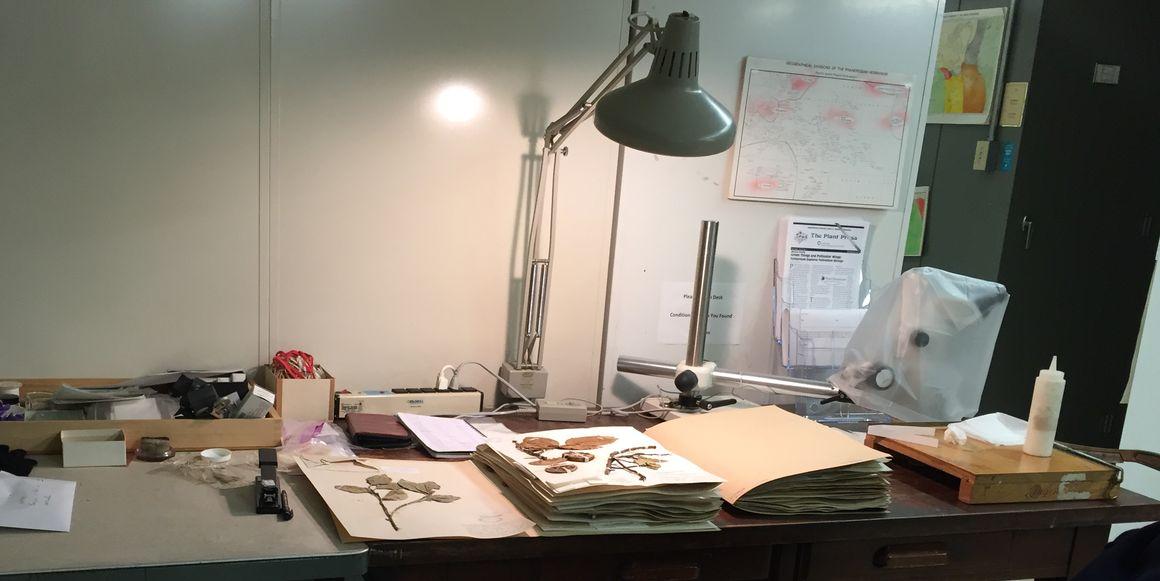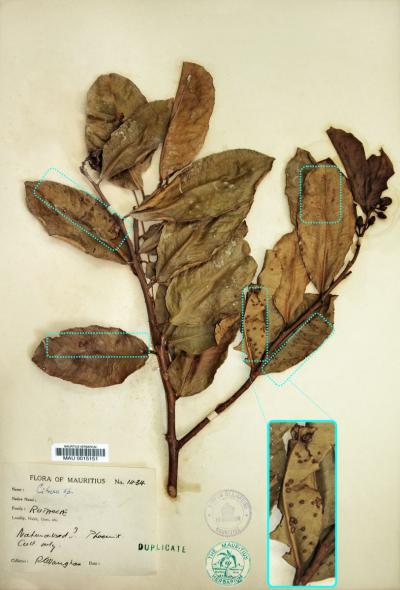Results & impact 10 October 2025
- Home
- Press area
- Press releases
- Ancient herbarium for the study of the evolutionary history of a citrus disease
An ancient herbarium has revealed the first secrets of the evolutionary history of a serious bacterial disease of citrus

Researchers have studied tens of ancient herbaria worldwide, to begin retracing the evolutionary history of a bacterial pathogen that affects citrus. Here, the Smithsonian Institution in the United States © L. Gagnevin, CIRAD
A first for a plant pathogenic bacterium. A team of scientists led by CIRAD recently demonstrated that the DNA of “ancient” bacteria can be isolated and sequenced from plants preserved in herbaria. They sequenced the genome of the bacterium Xanthomonas citri, responsible for citrus bacterial canker, from leaves collected in 1937 and conserved at the Mauritius Herbarium. This historical genome was then compared to 150 modern genomes of the same pathogen, in order to understand how it was introduced and spread throughout the islands of the South-West Indian Ocean. “A detailed analysis of the bacterium’s phylogeny revealed that it was probably introduced in Mauritius” explains Lionel Gagnevin, a plant pathologist at CIRAD in Montpellier, who worked on the study with Nathalie Becker, a molecular biologist at MNHN and Adrien Rieux, a population genomics specialist at CIRAD, both researchers working on the island of Réunion.
A pathogen originating from Asia, just like citrus plants
The bacterium probably emerged in Asia, the area where citrus plants – its exclusive hosts – appeared and were domesticated. From there, citrus canker disease spread to the Americas, Africa and Oceania in the late 19th or early 20th centuries. In the Indian Ocean, the disease was initially reported in 1917 on the islands of Mauritius and Rodrigues, then in the 1960s on the island of Réunion, in the Comoros and the Seychelles.
“We found a citrus specimen apparently infected with canker, collected in 1937 by Reginald E. Vaughan at Phoenix, Mauritius. This is the oldest specimen of its kind in our collections, and has been preserved under strictly controlled moisture and temperature conditions” said Claudia Baider, curator of the Mauritius Herbarium.
Hundreds of specimens from the 18th and 19th centuries ready to be analysed
Natural history museums worldwide still offer hundreds of specimens to be explored. Many infected samples have already been collected by the team, corresponding to other regions of the world, other time periods (notably the 18th and 19th centuries), and other citrus species. Their analysis should shed light on the global history of this major citrus disease. “The potential of museum herbarium resources is colossal and will help in understanding how plant pathogens emerge, particularly in relation to recent changes in agriculture” points out Lionel Gagnevin, who has explored several of these museums. Especially as DNA analysis techniques are evolving rapidly and offer some exciting new possibilities.
Reference
Campos PE, Groot Crego C, Boyer K, Gaudeul M, Baider C, Richard D, Pruvost O, Roumagnac P, Szurek B, Becker N, Gagnevin L, & Rieux A. 2021. First historical genome of a crop bacterial pathogen from herbarium specimen: Insights into citrus canker emergence. PLoS Pathogens, 17(7), e1009714. https://doi.org/10.1371/journal.ppat.1009714




























